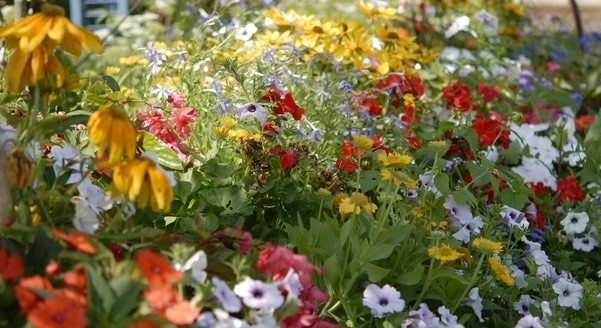
Everyone knows what a garden is, that’s for sure. It gets complicated in my eyes when it is said to be “ sustainable ”. Curious by nature, I immersed myself in the pages of a dictionary. I found a suitable definition there but too succinct for my taste. A sustainable garden would thus be “likely to last a long time . It would present a certain stability and a certain resistance ”. Here is my interpretation…
A sustainable garden is likely to last a long time!
Yes, and for that, you have to choose the plants to install there with the greatest care . I would even say that this choice is fundamental. To last, they must be adapted both to the local climate but also to the nature of the soil of the host garden. If it is true that the plant draws its food from the air and the earth, it is admitted that it also modifies the structure of the soil. The exchanges are bilateral. A plant that is poorly adapted to the soil and the climate will therefore have all the trouble in the world to survive.

In the best of cases, it will vegetate or prove itself vulnerable to attacks by parasites and diseases , for lack of having been able to draw from the soil the resources necessary for the development of its own natural defences. Believing that you can grow anything anywhere is a big mistake!
A sustainable garden has a certain natural resistance
Keep in mind that plants are living beings ! Like us, plants are born, live and die. This is the normal cycle. Sometimes they disappear suddenly and for no apparent reason! They can also fall ill even though they were healthy a few days earlier.
There are always gardeners ready to pull out the sprayer at the slightest sign of “not well”. I am one of those who believe that observation is the key to everything, especially if we assume that a well-adapted plant (and apart from the accidents mentioned above) has no reason to fall sick. A disease or the massive attack of a pest therefore translates a disorder or an imbalance whose origin should be found and corrected by careful observation and a little common sense.
Treatments also need to be reduced.

Rather than treating diseases or pests as soon as they appear, I personally work to prevent them from appearing, by providing plants with the ideal conditions for them to flourish. Tinkering with frames, shelters , light greenhouses to protect plants from excessive humidity, freshness or cold drafts and to recreate micro-climates is part of my habits, as is encouraging associations of plants, introduce diversity and attract wildlife to the garden. These are real good practices for a sustainable garden. Among insects, there are not only witches! Auxiliaries _(bees, lacewings, beetles, ladybirds…to name but a few) are essential! On this point, errors of gardeners are also frequent.
A sustainable garden has a certain stability.
Or a certain stability following as we see. You must first maintain and develop your land with natural products ! Herbal remedies or “potions” ( slurries , decoctions ), 100% biodegradable of course. Man didn’t invent anything. Long before the advent of chemistry, he drew his own remedies from plant richness. Why wouldn’t he do the same for the plants?
It is also necessary to have an ecological management of water . Water is a precious natural resource. Collecting it and redistributing it to the plants in the garden when they need it is easy and requires few resources.
Finally, we must realize that “ waste ” as such does not exist in the garden . Leave a plot fallow, you will find that life will abound, especially as time passes. What then becomes of the waste produced by plants? Well, the other way of seeing things is to say that the waste of some is food for others. Where the dead leaf, for example, represents “waste” for the tree which leaves it as soon as winter comes, it becomes “food” for the microfauna of the soil which in turn will return “its own waste” to the ground. A sustainable garden will therefore mainly rely on the practice of recycling in the form of composting, mulching, always with the aim of obtaining the most living soil possible!
This illustrates the stability and balance of a sustainable garden. Durable, but so fragile…
